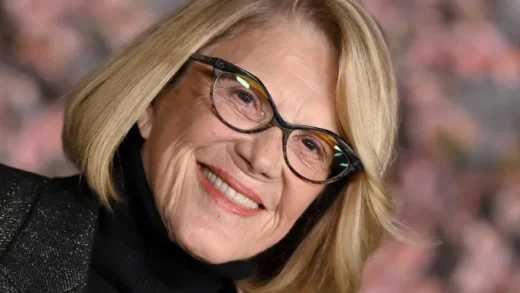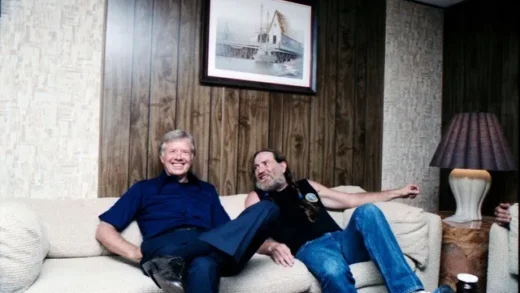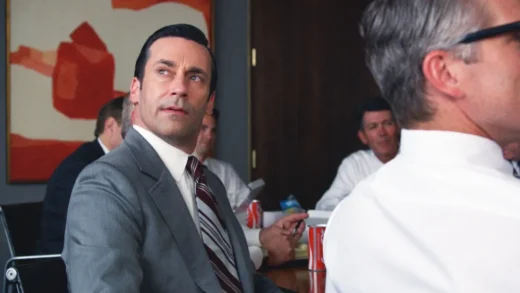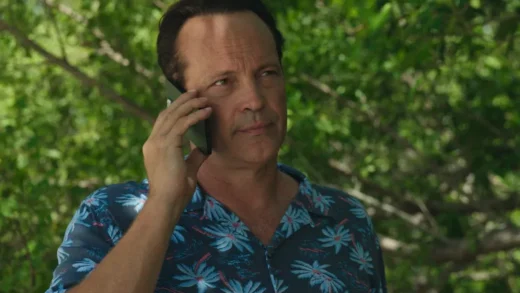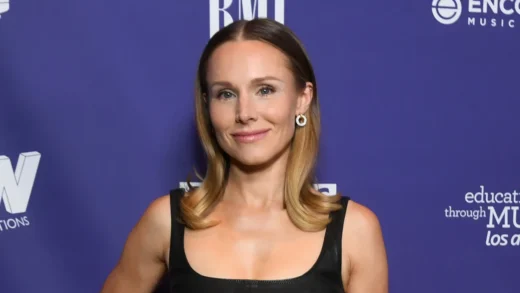Early in the production of The Other Side of the Wind, Orson Welles’ lead actor, the impressionist Rich Little, was having trouble understanding his part. The scene was a party for the legendary movie director Jake Hannaford, played by the legendary director John Huston, on what would become the last day of Hannaford’s life. Welles instructed Little and the other actors to behave as if the party had suddenly been invaded by dwarfs. Little, understandably, objected that that would be difficult to do, seeing as there were no dwarfs present. Welles roared back, “We’re going to put the midgets in later, in Spain!”
That story was first reported in the New York Times in 1976, 42 years before The Other Side of the Wind would be completed and 19 before Welles’ death, in 1985, at the age of 70. And it shows up again in Morgan Neville’s They’ll Love Me When I’m Dead, which will turn up on Netflix alongside a version of Other Side extracted from nearly 100 hours of footage, numerous scripts (one 360 pages long), and assorted directorial memos, alongside Welles’ own verbal instructions. It’s normally inadvisable to watch the making-of before the film itself, but in the case of Other Side, it helps to go in with a sense of the production’s monumentally troubled history, as well as the playfully associative logic of Welles’ later films, especially F for Fake, which begins as a documentary about confidence men and becomes something of a con game itself, with Welles as the trickster and the audience as his knowing, delighted patsies.
Rich Little appears briefly in The Other Side of the Wind, but not as its protagonist. After walking off the set, Little was reduced to an unidentified onlooker in the party scene. Little’s character, an eager young cineaste who has gone from idolizing Jake Hannaford to eclipsing him thanks to a burst of sudden success, was transparently modeled on Peter Bogdanovich, so it only made sense for Bogdanovich to step into the role. That’s only one of the ways in which the movie eats its own boundaries. Jake Hannaford is using the party to lure investors for his latest film, also called The Other Side of the Wind, a semiparodic take on the alienated, symbol-driven European art house cinema of the 1960s. (They’ll Love Me When I’m Dead reveals that the house where Hannaford’s party was shot is a neighbor to the one Michelangelo Antonioni blew up at the end of Zabriskie Point.) The Other Side within Other Side—are you still following this?—frequently takes over the screen, occupying a good chunk of the larger film, although Jake Hannaford’s movie, like Welles’, is still unfinished because of a dispute with his lead actor (Bob Random), who—and surely you can guess this part—walked off the set in the middle of the shoot. Among the film industry lights who turn up to play themselves are Dennis Hopper, Claude Chabrol, Edmond O’Brien, and Mercedes McCambridge, and Welles gets his revenge on Pauline Kael, who penned a book-length New Yorker essay questioning his role in the greatness of Citizen Kane, by casting Susan Strasberg as a petite film critic who pelts Hannaford with sophomoric questions about the latent homosexuality in his movies.
Early in the production of The Other Side of the Wind, Orson Welles’ lead actor, the impressionist Rich Little, was having trouble understanding his part. The scene was a party for the legendary movie director Jake Hannaford, played by the legendary director John Huston, on what would become the last day of Hannaford’s life. Welles instructed Little and the other actors to behave as if the party had suddenly been invaded by dwarfs. Little, understandably, objected that that would be difficult to do, seeing as there were no dwarfs present. Welles roared back, “We’re going to put the midgets in later, in Spain!”
That story was first reported in the New York Times in 1976, 42 years before The Other Side of the Wind would be completed and 19 before Welles’ death, in 1985, at the age of 70. And it shows up again in Morgan Neville’s They’ll Love Me When I’m Dead, which will turn up on Netflix alongside a version of Other Side extracted from nearly 100 hours of footage, numerous scripts (one 360 pages long), and assorted directorial memos, alongside Welles’ own verbal instructions. It’s normally inadvisable to watch the making-of before the film itself, but in the case of Other Side, it helps to go in with a sense of the production’s monumentally troubled history, as well as the playfully associative logic of Welles’ later films, especially F for Fake, which begins as a documentary about confidence men and becomes something of a con game itself, with Welles as the trickster and the audience as his knowing, delighted patsies.
Rich Little appears briefly in The Other Side of the Wind, but not as its protagonist. After walking off the set, Little was reduced to an unidentified onlooker in the party scene. Little’s character, an eager young cineaste who has gone from idolizing Jake Hannaford to eclipsing him thanks to a burst of sudden success, was transparently modeled on Peter Bogdanovich, so it only made sense for Bogdanovich to step into the role. That’s only one of the ways in which the movie eats its own boundaries. Jake Hannaford is using the party to lure investors for his latest film, also called The Other Side of the Wind, a semiparodic take on the alienated, symbol-driven European art house cinema of the 1960s. (They’ll Love Me When I’m Dead reveals that the house where Hannaford’s party was shot is a neighbor to the one Michelangelo Antonioni blew up at the end of Zabriskie Point.) The Other Side within Other Side—are you still following this?—frequently takes over the screen, occupying a good chunk of the larger film, although Jake Hannaford’s movie, like Welles’, is still unfinished because of a dispute with his lead actor (Bob Random), who—and surely you can guess this part—walked off the set in the middle of the shoot. Among the film industry lights who turn up to play themselves are Dennis Hopper, Claude Chabrol, Edmond O’Brien, and Mercedes McCambridge, and Welles gets his revenge on Pauline Kael, who penned a book-length New Yorker essay questioning his role in the greatness of Citizen Kane, by casting Susan Strasberg as a petite film critic who pelts Hannaford with sophomoric questions about the latent homosexuality in his movies.
In They’ll Love Me When I’m Dead, Bogdanovich firmly rebuffs the suggestion that Welles, who left over a dozen projects in various stages of incompleteness when he died, preferred shooting movies to finishing them, and the stories of some ill-fated productions almost beggar belief. One of the primary obstacles to The Other Side of the Wind’s completion was the Iranian Revolution, which nationalized the assets of one of Welles’ financiers along with much of the film negative. It’s to the credit of all involved—Bogdanovich and producer Frank Marshall, both of whom were on the set; cinematographer Gary Graver, who shot the film and pressed to finish it for years after Welles’ death, until he too died in 2006; producer Filip Jan Rymsza, who untangled the legal knots and smoothed over the disputes between the parties with claims to the footage—that The Other Side of the Wind doesn’t play like an unfinished film. But its true savior might be editor Bob Murawski, who picked up the pieces Welles had edited over the years—about a third of what is now the completed film—and channeled the idiosyncratic style of late-period Welles. If the result can never be the film Welles would have made, it’s at least one he might have made. (The same, unfortunately, can’t be said for Aaron Wickenden and Jason Zeldes’ editing of They’ll Love Me When I’m Dead, which emulates Welles and feels like it’s punching very much above its weight.)
(Excerpt) Read more in: Slate
